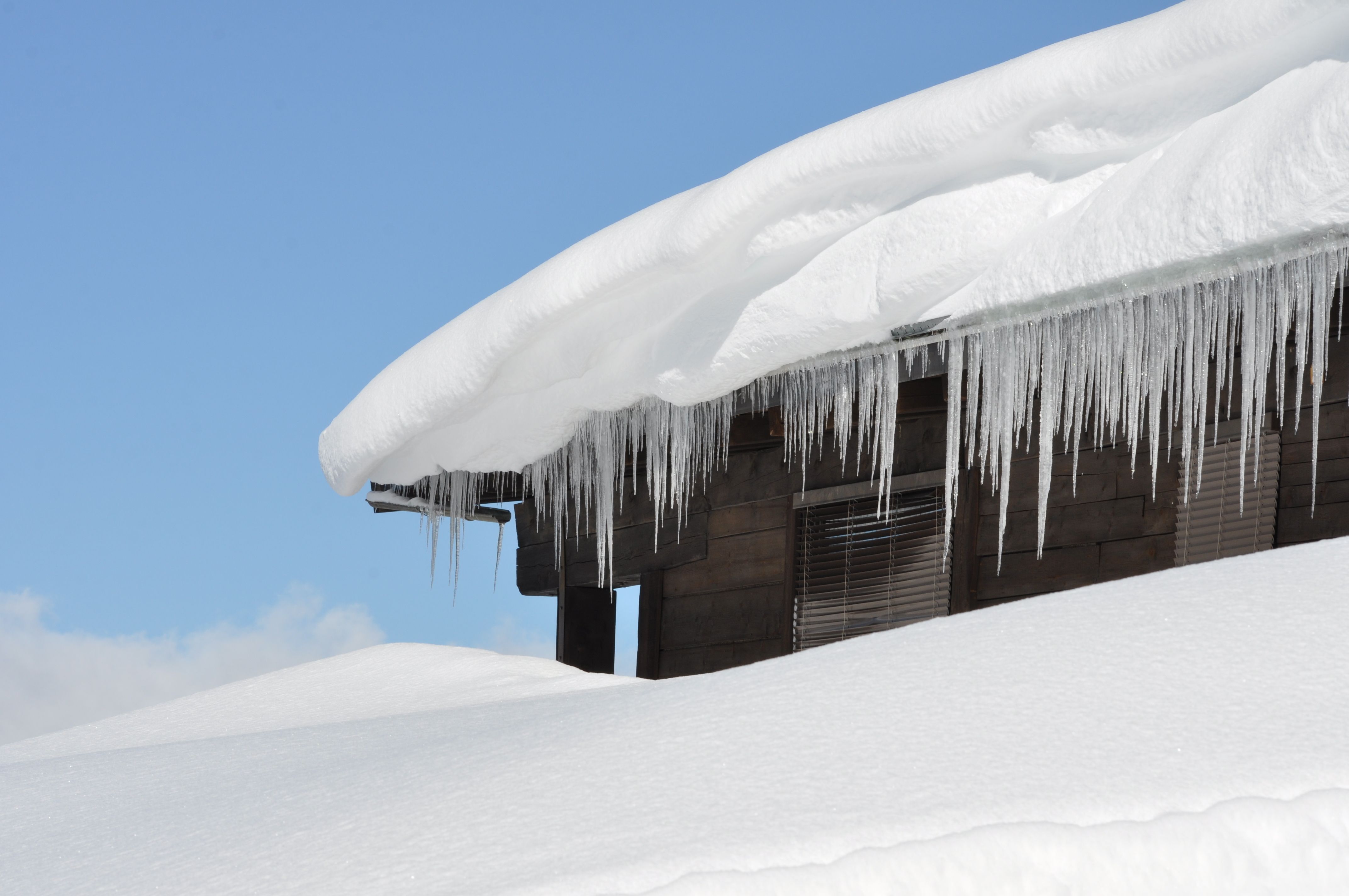At Divine Roofing, Inc. we know that snow may be one of the most beautiful parts of a Colorado winter, but for many homeowners, the sight of white powder means nothing but trouble. And no, we’re not talking about having to shovel your driveway and walkway or chip ice off your car every morning. We’re talking about collections of frozen water on your roof called ice dams, and how incredibly dangerous and damaging they can be.
How Ice Dams Form
The formation of an ice dam is a fairly simple process. The warm, heated air inside your home rises to the roof, where it heats your roof itself, causing the snow on your roof to melt into water. The water then drips down the slope of your roof, all the while moving away from the heat and growing progressively colder. Eventually, the water re-freezes on a lower point of your roof, blocking other water from leaving, which adds to the mass of frozen water, eventually creating a solid block of ice known as an ice dam.
Why Ice Dams Are Dangerous
Water is inherently heavy, which means an accumulation of it can add a lot of weight to your roof. Thus, ice dams can place a lot of stress on your roof, which already has to bear the added weight of snow continuing to fall on it. On top of the added weight, ice dams are made of water, and the continual buildup of water that settles on your roof can eventually leak through tiles and shingles, dealing damage to the underlayment and structure beneath. Ice dams are one of the largest causes of roof leaks developed during the winter months.
Finally, ice dams are a massive block of ice that’s simply sitting on your slanted rooftop. While it might seem like a real chore to remove them and take them down, these blocks of ice can give way and come crashing off your roof without warning. Should any property be directly below the block of ice when it falls, it’s almost certainly going to be crushed and destroyed. Should a person be underneath, the collision can cause serious injuries or worse.
Preventing Ice Dams
People have tried all sorts of ways to try to prevent ice dams from forming, including installing roof heaters, placing melting tablets, and much more. However, the only tried-and-true way to really make sure a dam doesn’t form is to thoroughly insulate your ceiling to make sure as little heat as possible can escape. In addition, proper ventilation of your attic can help make sure that the temperature difference between your attic and the outside air isn’t high enough to allow snow to melt and dams to form in the first place.
If you have an old, leaky roof that needs repair or are struggling with a poorly-ventilated attic, call Divine Roofing, Inc. today at (719) 497-1005 to request a service estimate or roof inspection!

